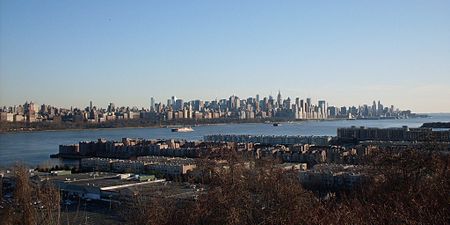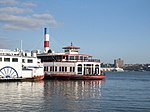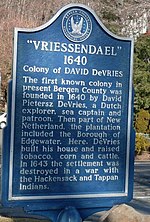Edgewater, New Jersey

Edgewater is a borough located along the Hudson River in Bergen County, in the U.S. state of New Jersey. As of the 2020 United States census, the borough's population was 14,336, an increase of 2,823 (+24.5%) from the 2010 census count of 11,513, which in turn reflected an increase of 3,836 (+50.0%) from the 7,677 counted in the 2000 CensusThe borough's history has featured the founding of the first colony in Bergen County, contribution to the Revolutionary War, a period as a "sleepy, pastoral little town" with resort hotels in the 19th century, industrialization in the early 20th century, and a transition to a rapidly growing residential community in the late 20th century.Edgewater was incorporated as a municipality on December 7, 1894, from portions of Ridgefield Township as the Borough of Undercliff, based on the results of a referendum that passed two days earlier. The borough was formed during the "Boroughitis" phenomenon then sweeping through Bergen County, in which 26 boroughs were formed in the county in 1894 alone. The borough's name was changed to Edgewater on November 8, 1899. The borough was named for its location on the Hudson River.
Excerpt from the Wikipedia article Edgewater, New Jersey (License: CC BY-SA 3.0, Authors, Images).Edgewater, New Jersey
River Road,
Geographical coordinates (GPS) Address Nearby Places Show on map
Geographical coordinates (GPS)
| Latitude | Longitude |
|---|---|
| N 40.82465 ° | E -73.973793 ° |
Address
Whole Foods Market
River Road
07020
New Jersey, United States
Open on Google Maps








